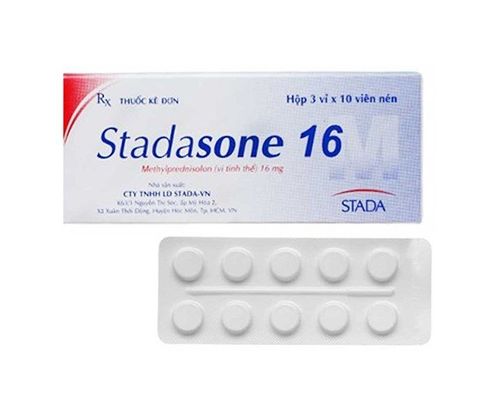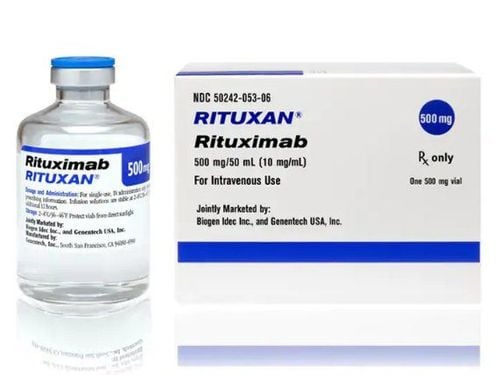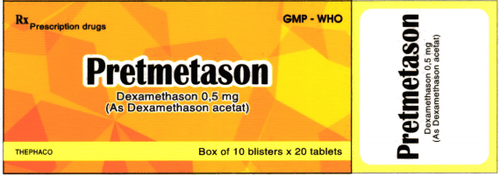This is an automatically translated article.
Scleroderma is a chronic connective tissue disease, commonly classified in the autoimmune rheumatic group. The cause of scleroderma is still unknown, possibly due to overproduction of collagen.1. What is scleroderma?
The word "scleroderma" is of Greek origin, where "sclero" means hard and "derma" means skin. Hard skin is one of the most visible manifestations of the disease. This condition was once called “systemic progressive scleroderma,” but the term is inaccurate because scleroderma is not necessarily progressive. Symptoms will vary from patient to patient.
Any chronic disease can be serious for health and scleroderma is no exception. The symptoms of scleroderma vary widely from person to person, and the effects can range from very mild to life-threatening. The severity of the disease will depend on the parts of the body affected. A mild case also carries the risk of becoming more serious if not treated properly. Timely diagnosis and treatment by qualified physicians will minimize the symptoms of scleroderma and avoid the risk of irreversible damage.
Currently, there are no accurate statistics on how long scleroderma patients live. In general, the rate of patients living more than 10 years is 50-60%, if the treatment regimen is followed, the disease will not affect the quality of life much, the sufferer can still prolong the time and live with the disease.
2. How does scleroderma form?
An estimated 300,000 Americans have scleroderma, about one-third of whom have systemic scleroderma. Scleroderma can develop at any age, from infants to the elderly, but is most common between the ages of 25 and 55.
Localized scleroderma is more common in children, while scleroderma is more common in children. system is more common in adults. Mainly female patients, accounting for about 4 women to 1 male. Therefore, scientists predict that the endocrine factor estrogen may also be a cause of the disease. In addition to gender, other factors such as race, age, environment... can also affect the risk of onset or severity of the disease.

Bệnh xơ cứng bì thường gặp ở nữ giới nhiều hơn
The cause of scleroderma is still unknown. Scientists and medical researchers are still trying to come to a final conclusion. But in general, scleroderma is associated with excessive collagen production.
The patient's immune system will signal the body to make a lot of collagen protein - an important element of the skin. As a result, their skin becomes thick and tight, which can cause scarring on the lungs and kidneys. Your blood vessels can thicken and stop working properly. This leads to tissue damage and high blood pressure.
3. Classification of scleroderma
3.1. Localized scleroderma These manifestations are usually found in only a few places on the skin or muscles, rarely spreading. In general, localized sclerosis is relatively mild, internal organs are not affected. People with partial sclerosis also rarely develop systemic sclerosis. Some of the common complications of systemic sclerosis also do not appear to be localized. This condition is further divided into two subtypes:
Localized scleroderma (Morphea); Linear scleroderma (Linear scleroderma). 3.2. Systemic scleroderma The term “systemic scleroderma” means hardening that occurs in the internal systems of the body. The disease affects connective tissues in many parts of the body, including the skin, esophagus, gastrointestinal tract (stomach and intestines), lungs, kidneys, heart, and other internal organs. Systemic scleroderma can also affect blood vessels, muscles, and joints. Visceral muscle tissue becomes stiff and inefficient.
Systemic scleroderma is also divided into two subtypes: progressive scleroderma (diffuse) and limited scleroderma.

Hình ảnh xơ cứng bì hệ thống tổn thương tại da
Limited scleroderma is sometimes called CREST syndrome - short for the first letters, referring to five common features:
Calcinosis - Calcification, calcification of the skin arteries; Raynaud Phenomenon - Raynaud's syndrome (a phenomenon of arterial spasm, which reduces blood flow to organ tissues); Esophageal dysfunction - Esophageal dysfunction ; Sclerodactyly - Hard tip; Telangiectasia - Varicose veins.
4. Diagnosis and treatment
4.1. Diagnosis Because scleroderma has symptoms similar to those of other autoimmune diseases, diagnosis is often difficult. There are many cases where the diagnosis is wrong or the disease is not found.
The diagnostic process requires consultation with a rheumatologist (arthritis specialist), combined with a dermatologist (skin specialist), as well as blood tests and many tests other specialties, depending on the affected organ.
4.2. Treatment There is currently no cure for scleroderma, but many treatments have been used to control symptoms. This is similar to managing heartburn with proton pump inhibitors or drugs that improve bowel movements, because there is no specific treatment.
Some scleroderma treatments target the immune system. People with mild illness may not need medication. Sometimes people can stop scleroderma treatment when the disease is no longer progressing. Because the disease has so many variations from person to person, the treatments prescribed will also vary widely.

Điều trị bệnh xơ cứng bì bằng thuốc ức chế bơm proton
Summary scleroderma is a hardening disease of the skin and tissues, classified into two main types as local scleroderma and systemic scleroderma. However, symptoms vary from person to person, sometimes with a combination of the two. Diagnosis and treatment will be based on the individual characteristics and prognosis of each patient, but further research is needed in the future.
To register for examination and treatment at Vinmec International General Hospital, you can contact the nationwide Vinmec Health System Hotline, or register online HERE.
Reference source: Webmd.com; scleroderma.org, mayoclinic.org













